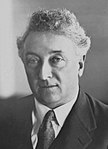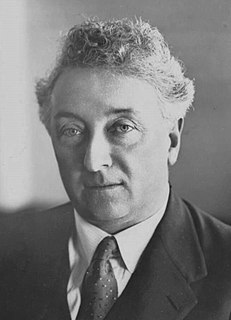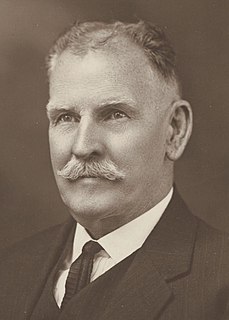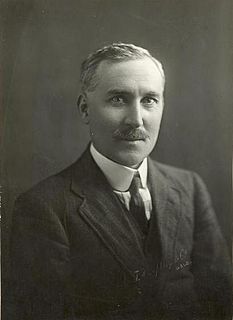| |||||||||||||||||||||||||||||||||||||||||
All 75 seats of the House of Representatives 38 seats were needed for a majority in the House 18 (of the 36) seats of the Senate | |||||||||||||||||||||||||||||||||||||||||
|---|---|---|---|---|---|---|---|---|---|---|---|---|---|---|---|---|---|---|---|---|---|---|---|---|---|---|---|---|---|---|---|---|---|---|---|---|---|---|---|---|---|
| |||||||||||||||||||||||||||||||||||||||||
| |||||||||||||||||||||||||||||||||||||||||
Federal elections were held in Australia on 19 December 1931. All 75 seats in the House of Representatives and 18 of the 36 seats in the Senate were up for election.

Elections in Australia take place periodically to elect the legislature of the Commonwealth of Australia, as well as for each Australian state and territory. Elections in all jurisdictions follow similar principles, though there are minor variations between them. The elections for the Australian Parliament are held under the federal electoral system, which is uniform throughout the country, and the elections for state and territory Parliaments are held under the electoral system of each state and territory.

The House of Representatives is the lower house of the bicameral Parliament of Australia, the upper house being the Senate. Its composition and powers are established in Chapter I of the Constitution of Australia.

The Senate is the upper house of the bicameral Parliament of Australia, the lower house being the House of Representatives. The composition and powers of the Senate are established in Chapter I of the Constitution of Australia. There are a total of 76 Senators: 12 are elected from each of the six states regardless of population and 2 from each of the two autonomous internal territories. Senators are popularly elected under the single transferable vote system of proportional representation.
Contents
The incumbent first-term Australian Labor Party (ALP) government led by Prime Minister James Scullin was defeated in a landslide by the United Australia Party (UAP) led by Joseph Lyons. To date, no other sitting government at federal level has been defeated after only a single term in office. The election was held at a time of great social and political upheaval, coming at the peak of the Great Depression in Australia. The UAP had only been formed a few months before the election, as a merger of the Nationalist Party, the Australian Party, and a few ALP defectors (including Lyons himself).

The Australian Labor Party is a major centre-left political party in Australia. The party has been in opposition at the federal level since the 2013 election. Bill Shorten has been the party's federal parliamentary leader since 13 October 2013. The party is a federal party with branches in each state and territory. Labor is in government in the states of Victoria, Queensland, Western Australia, and in both the Australian Capital Territory and Northern Territory. The party competes against the Liberal/National Coalition for political office at the federal and state levels. It is the oldest political party in Australia.
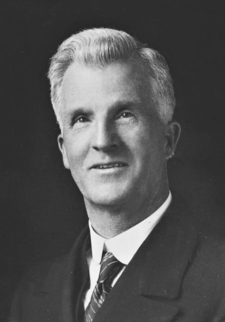
James Henry Scullin was an Australian Labor Party politician and the ninth Prime Minister of Australia. Scullin led Labor to government at the 1929 election. The Wall Street Crash of 1929 transpired just two days after his swearing in, which would herald the beginning of the Great Depression in Australia. Scullin's administration would soon be overwhelmed by the economic crisis, with interpersonal and policy disagreements causing a three-way split of his party that would bring down the government in late 1931. Despite his chaotic term of office, Scullin remained a leading figure in the Labor movement throughout his lifetime, and served as an éminence grise in various capacities for the party until his retirement in 1949.
The United Australia Party (UAP) was an Australian political party that was founded in 1931 and dissolved in 1945. The party won four federal elections in that time, usually governing in coalition with the Country Party. It provided two Prime Ministers of Australia – Joseph Lyons (1932–1939) and Robert Menzies (1939–1941).
Scullin's position eroded further when five left-wing Labor MPs from New South Wales who supported NSW Premier Jack Lang broke away and moved to the crossbenches in protest of Scullin's economic policy. Late in 1931, they supported a UAP no-confidence motion and brought down the government. The two Labor factions were decimated; massive vote-splitting left them with only 18 seats between them (14 for the official ALP and four for the Langites).
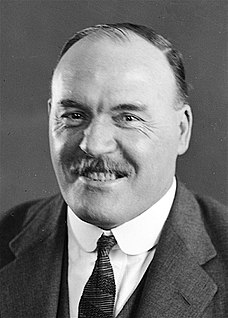
John Thomas Lang, usually referred to as J. T. Lang during his career and familiarly known as "Jack" and nicknamed "The Big Fella", was an Australian politician who twice served as the 23rd Premier of New South Wales from 1925 to 1927 and again from 1930 to 1932. He was dismissed by the Governor of New South Wales, Sir Philip Game, at the climax of the 1932 constitutional crisis and resoundingly lost the resulting election and subsequent elections as Leader of the Opposition. He later formed Lang Labor and was briefly a member of the Australian House of Representatives.
Prior to the election, it was assumed that the Country Party, led by Earle Page, would hold the balance of power, and Page tentatively agreed to support the UAP if that were the case. The two parties campaigned separately and stood candidates against each other in the House of Representatives, but ran joint tickets in Senate. However, the UAP came up four seats short of a majority. The UAP's South Australian Emergency Committee counterparts in South Australia joined the UAP party room, giving the UAP enough numbers to form a majority government in their own right. Page was still willing to form a coalition with the Country Party, but negotiations broke down and Lyons decided the UAP would govern by itself – the First Lyons Ministry was composed solely of UAP members. [2]
The National Party of Australia is an Australian political party. Traditionally representing graziers, farmers, and rural voters generally, it began as the Australian Country Party in 1920 at a federal level. It would later briefly adopt the name National Country Party in 1975, before adopting its current name in 1982.
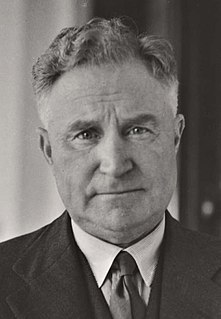
Sir Earle Christmas Grafton Page, was an Australian politician who served as the 11th Prime Minister of Australia, holding office for 19 days after the death of Joseph Lyons in 1939. He was the leader of the Country Party from 1921 to 1939, and was the most influential figure in its early years.
In parliamentary politics, the term balance of power may describe a parliamentary situation in which a member or a number of members of chamber are in a position by their uncommitted vote to enable a party to attain and remain in minority government, and the term may also be applied to the members who hold that position. The members holding the balance of power may guarantee their support for a government by either joining it in a coalition government or by an assurance that they will vote against any motion of no confidence in the government or abstain in such a vote. In return for such a commitment, such persons may demand legislative or policy commitments from the party they are to support. A person or party may also hold a balance of power in a chamber without any commitment to government, in which case both the government and opposition groupings may on occasion need to negotiate that person's legislative support.
